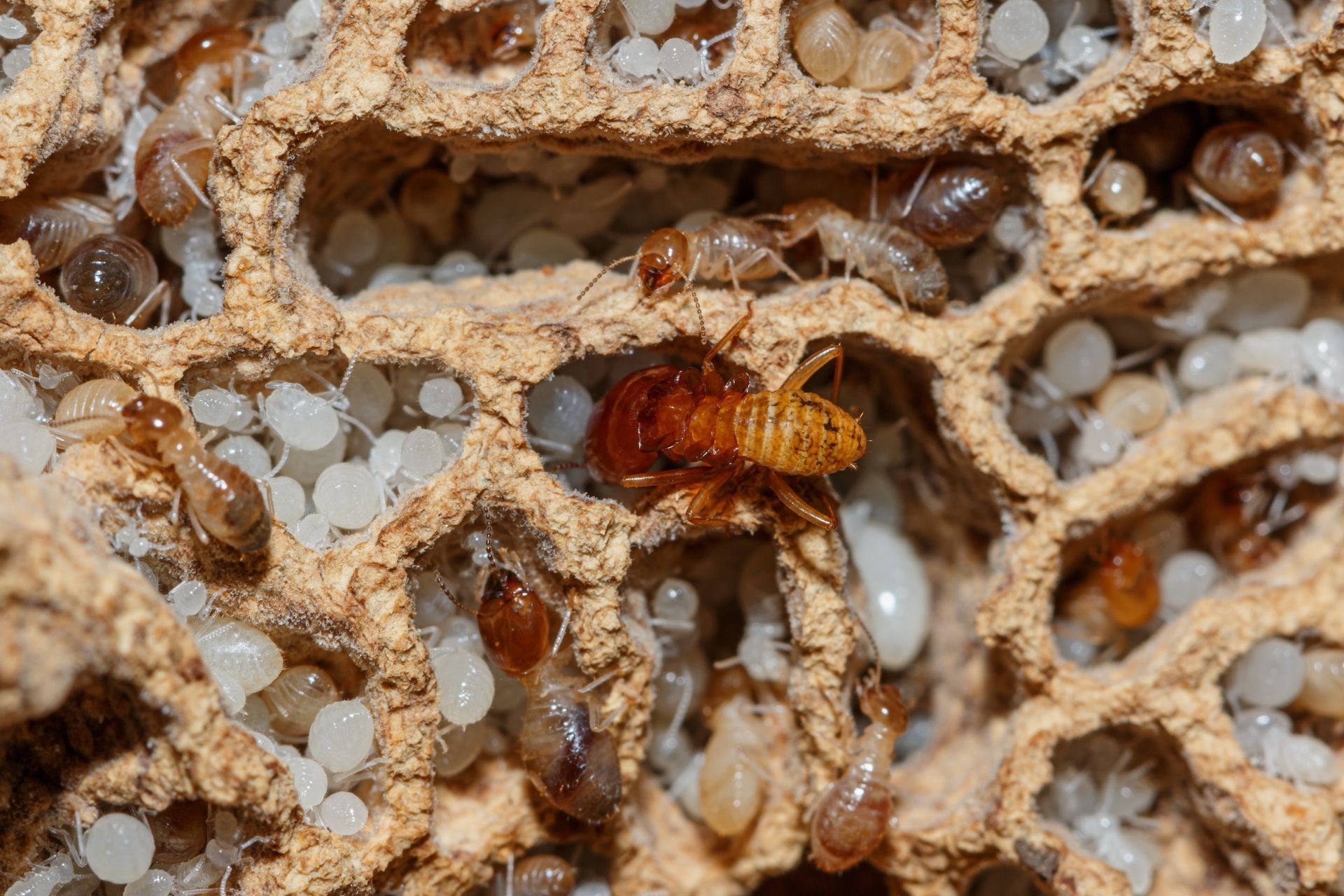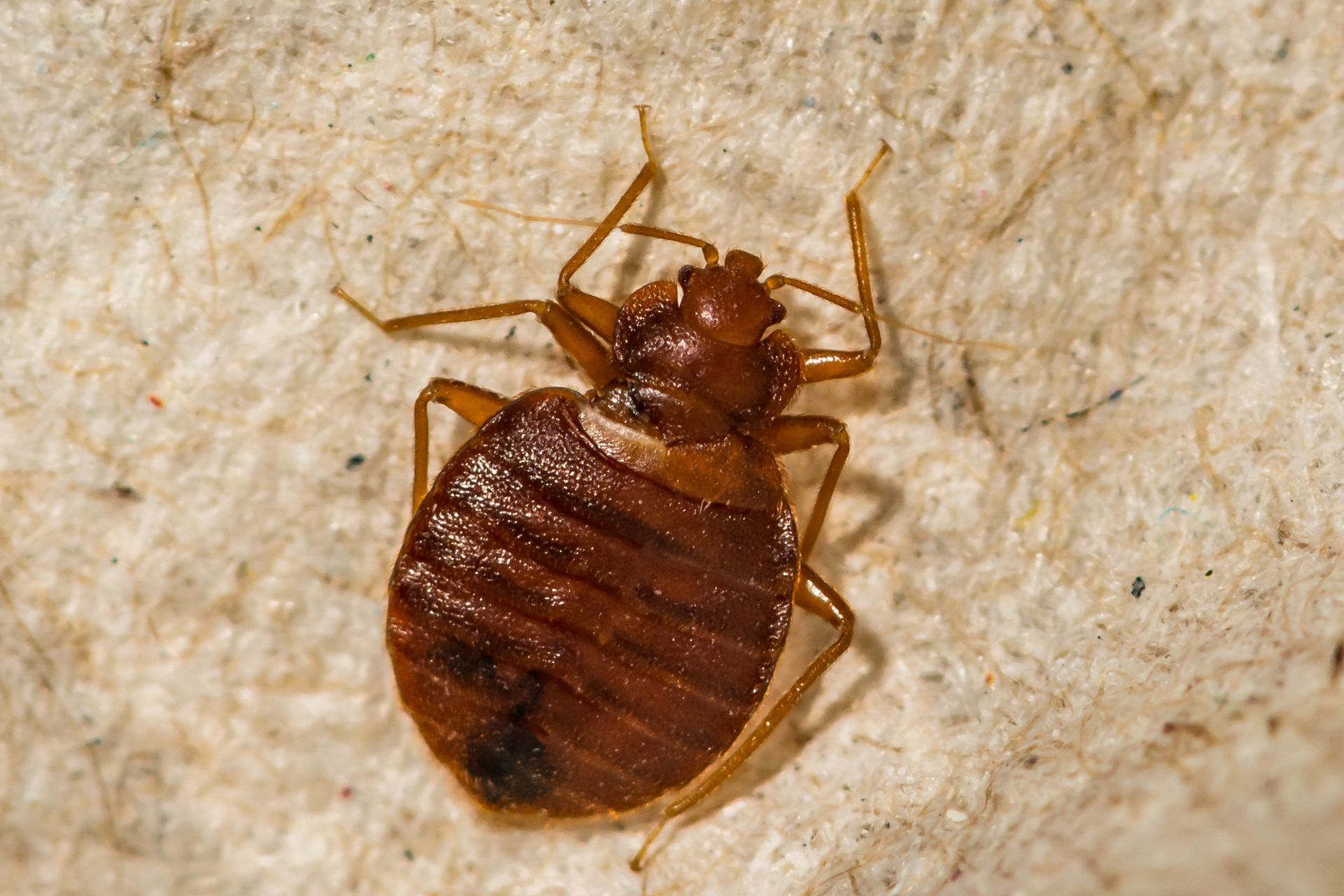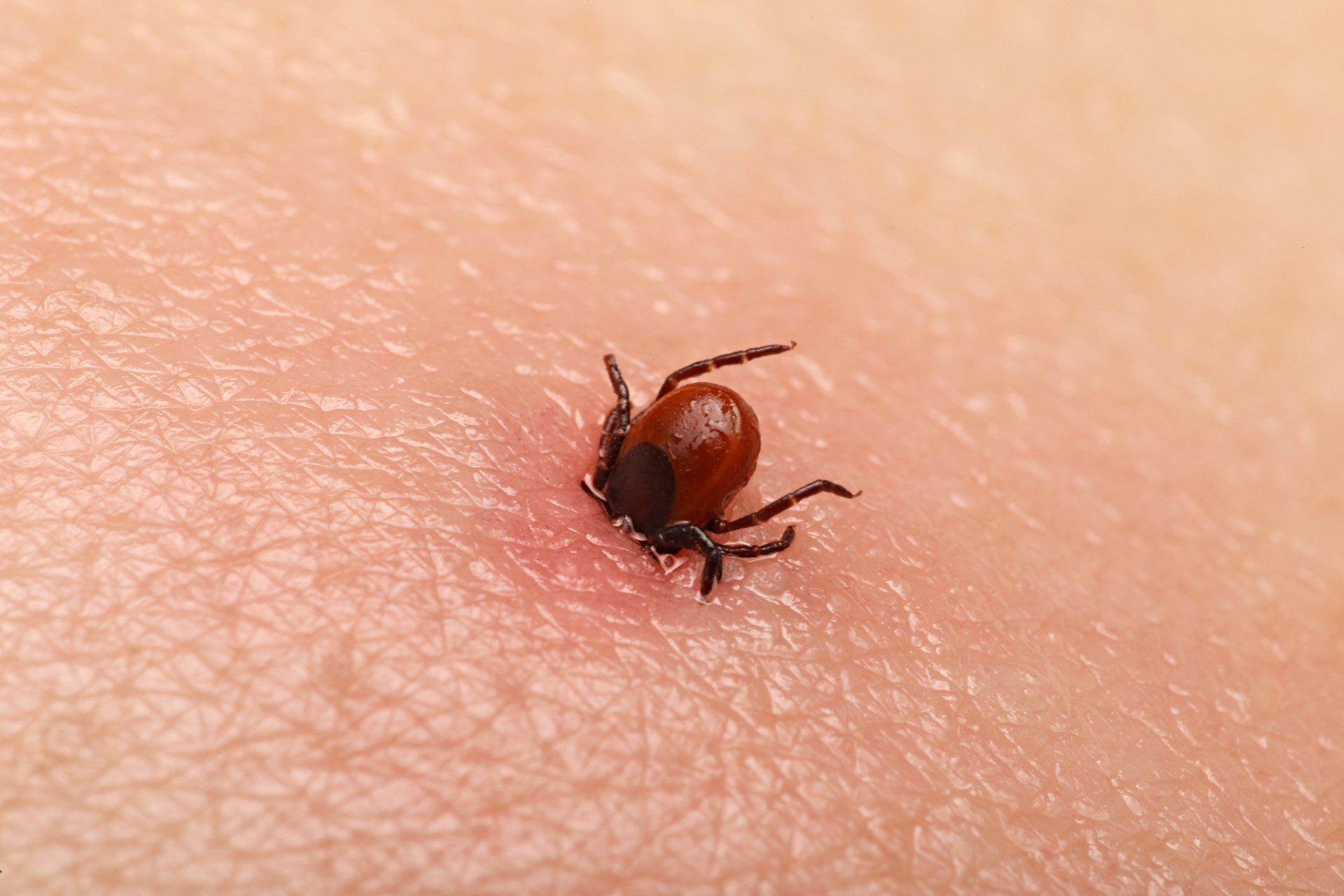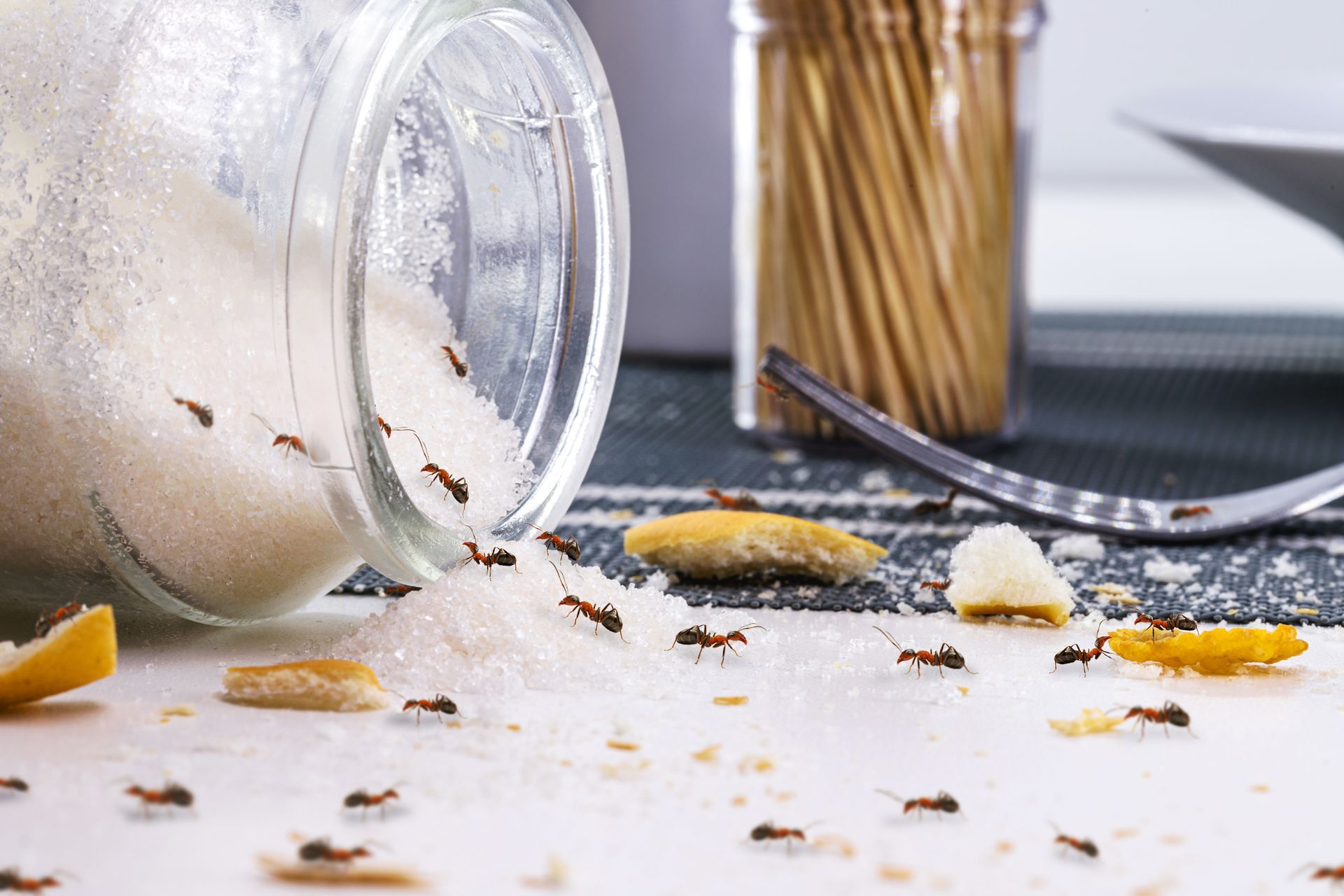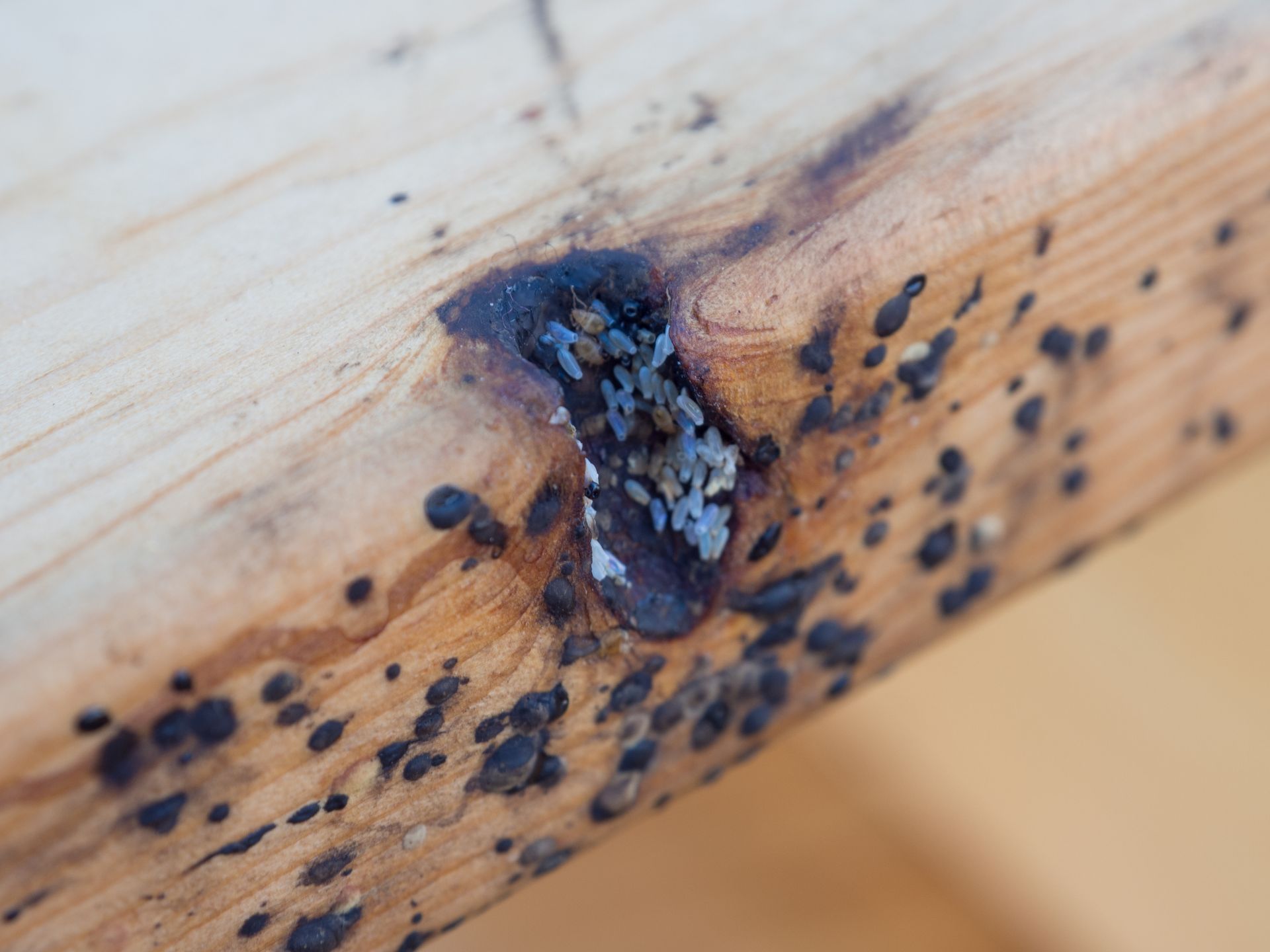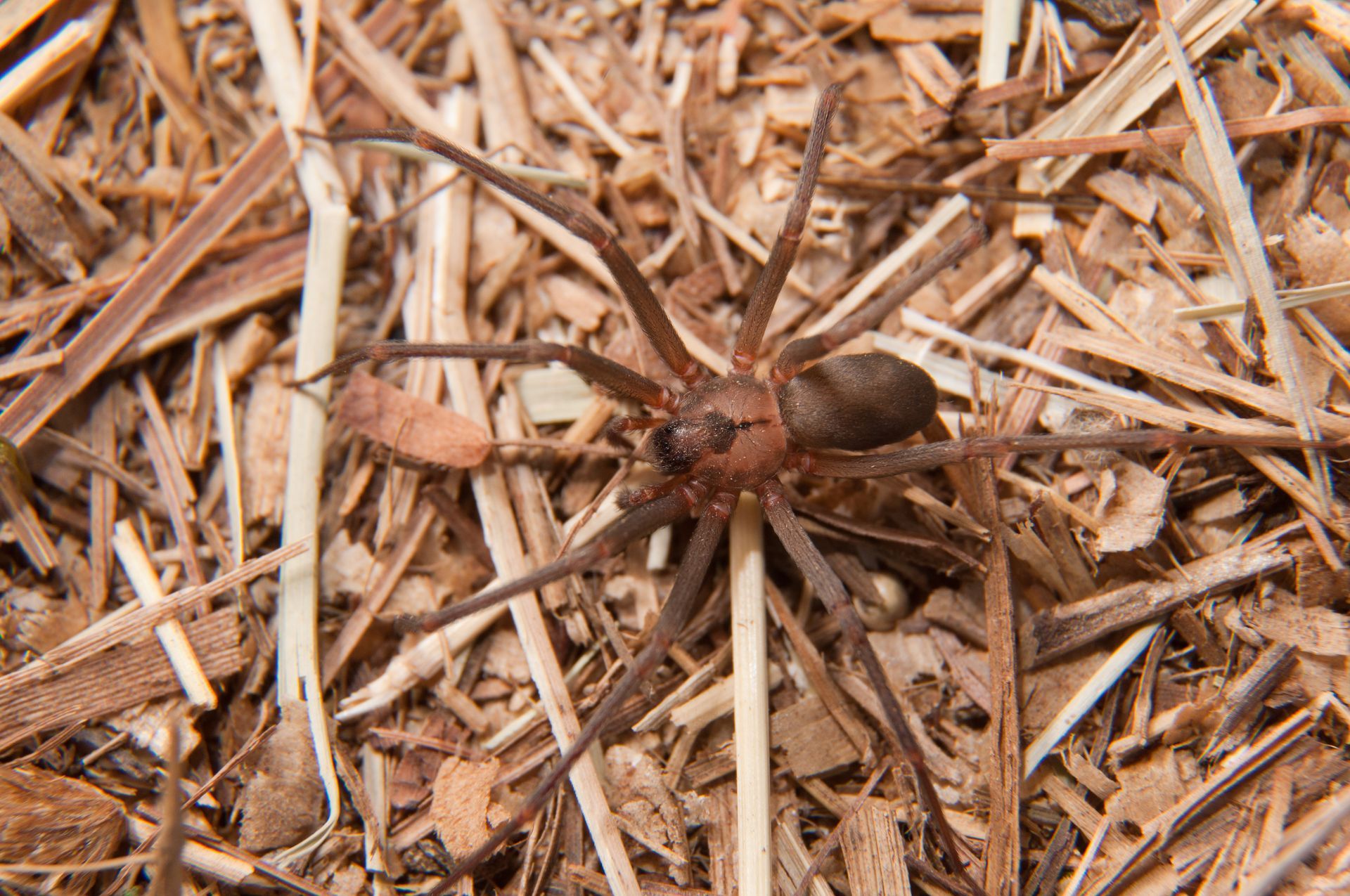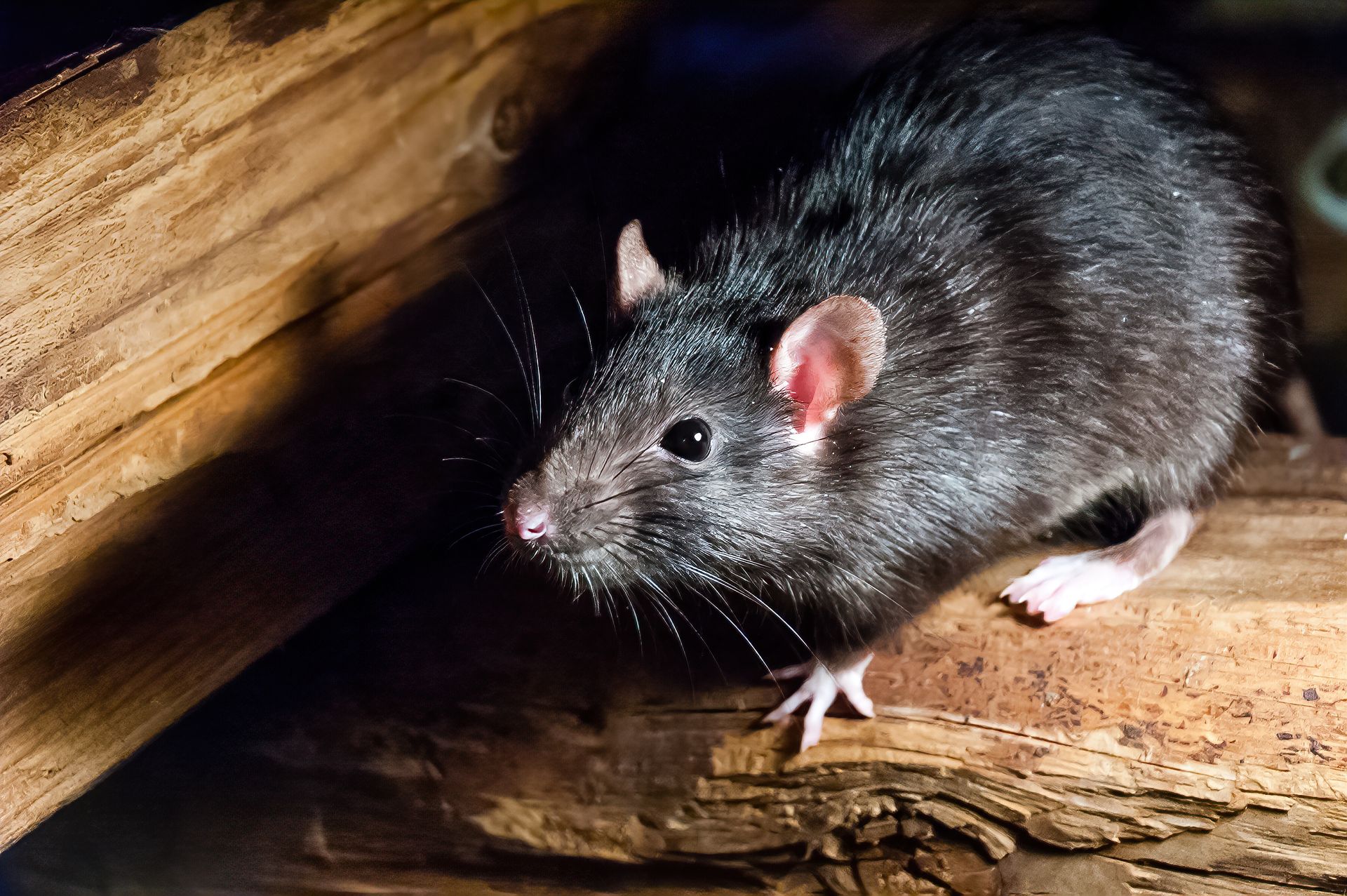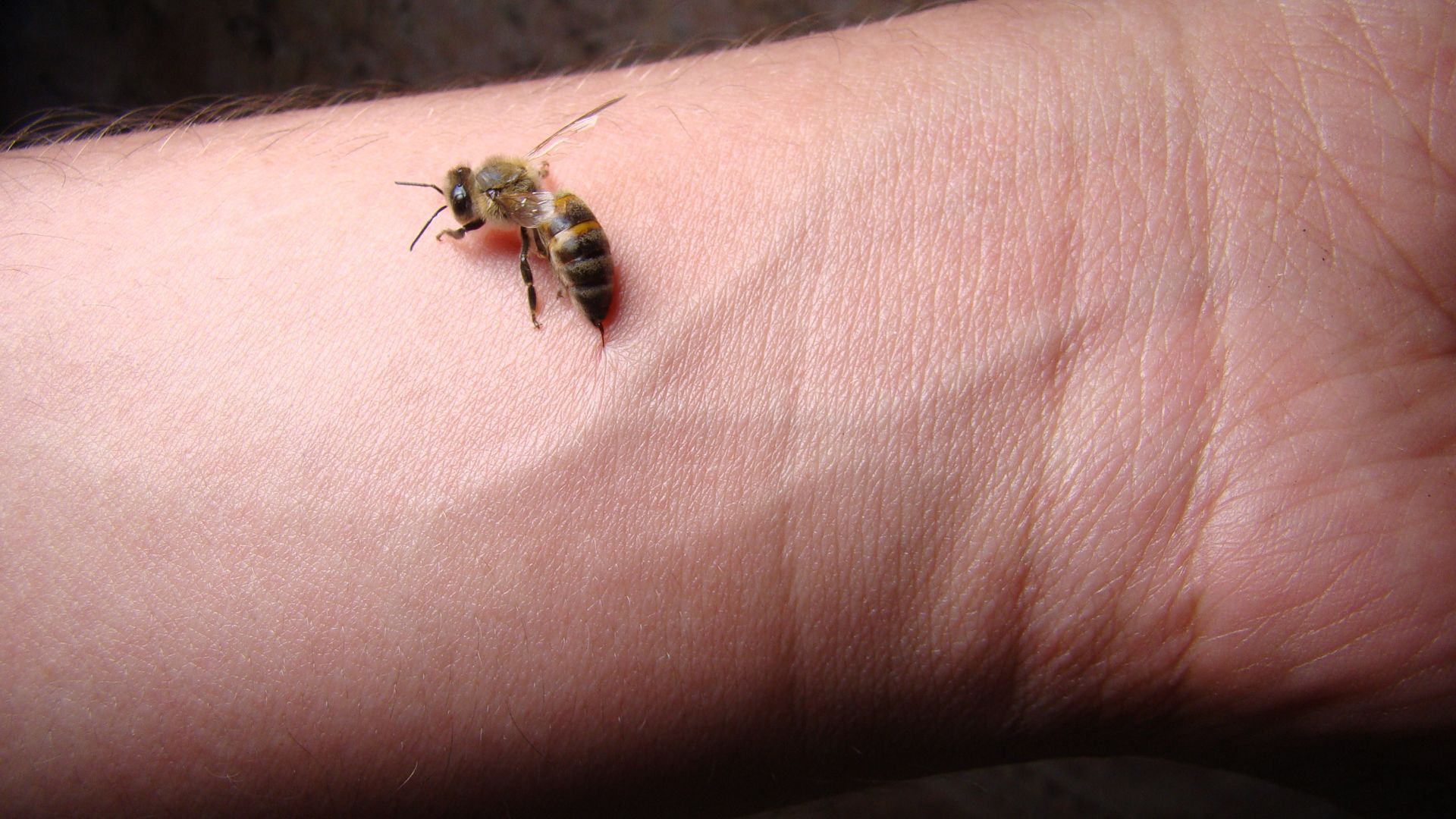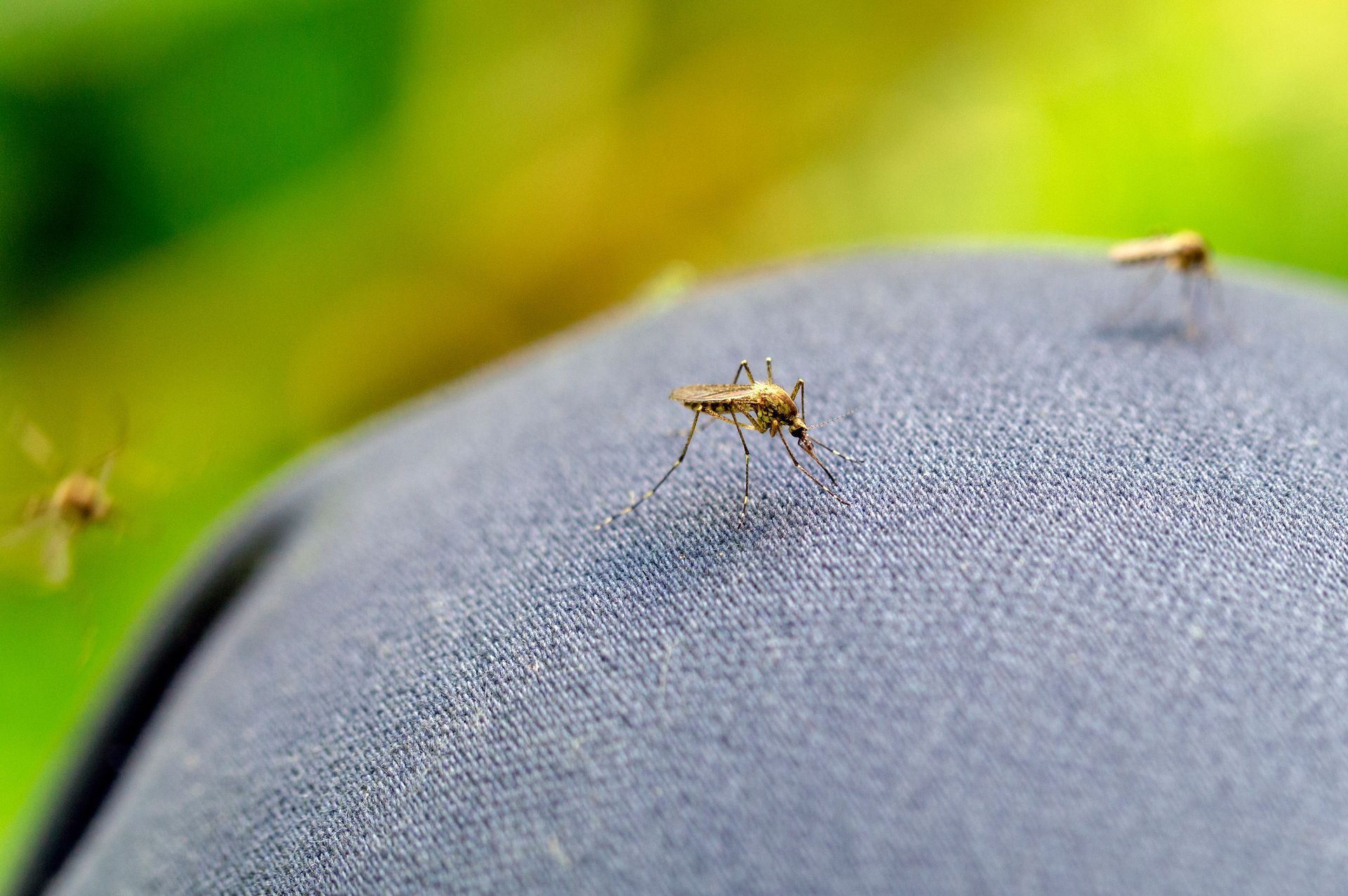Termite Eggs Appearance & Hiding Locations
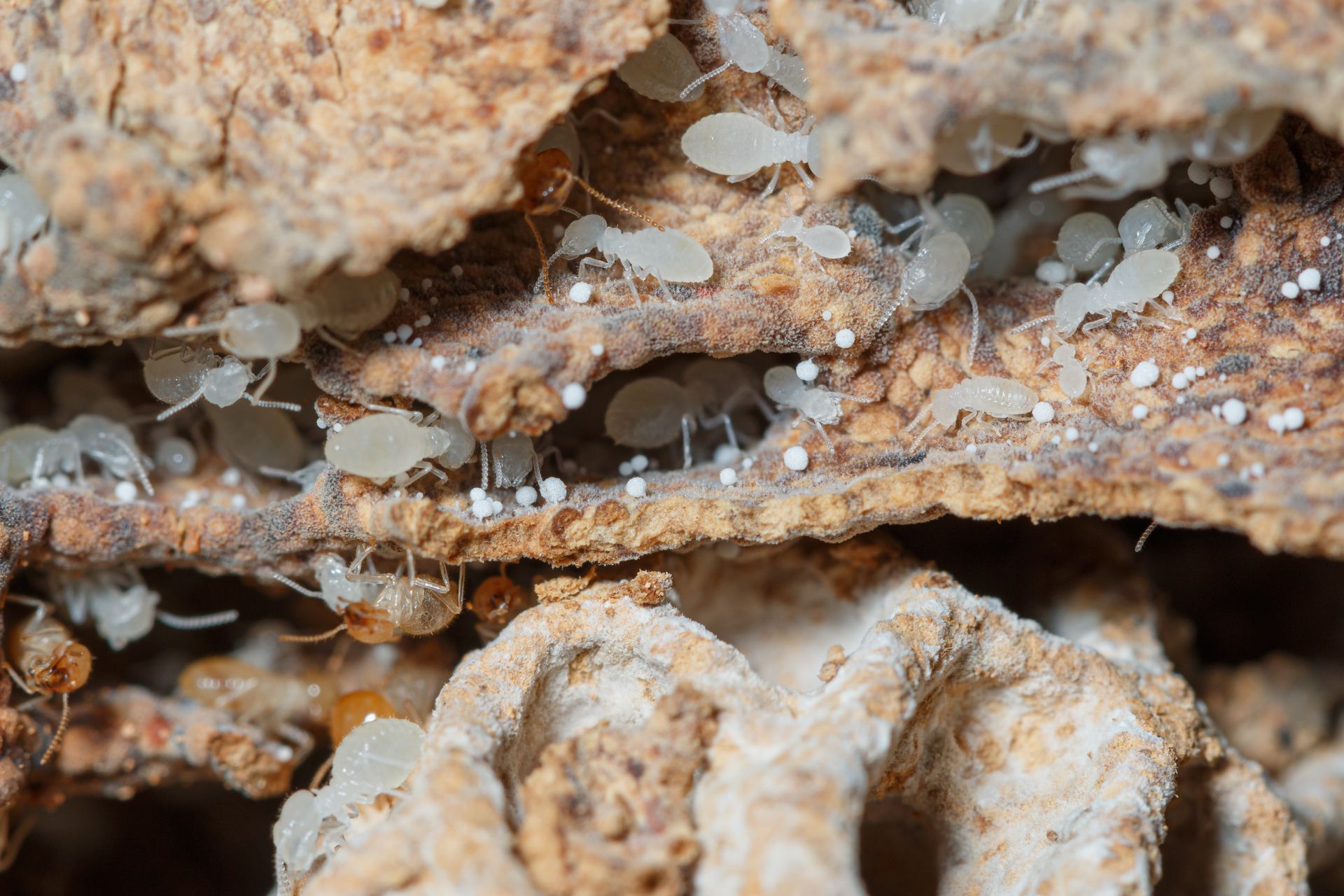
Termite’s life cycle starts when the queen lays a batch of eggs. These eggs are tiny translucent to white orbs that are contained deep within the termite nest. It is rare for people to ever come into contact with drywood termite eggs unless an inspector discovers the core chambers where the queen and eggs are during inspection. Subterranean termite eggs are usually found buried under ground in the heart of the nest which can be found up 18 inches below ground level.
What Do Termite Eggs Look Like?
Termite eggs are rarely seen because they are usually well protected deep within the colony. However, under magnification, termite eggs are usually a translucent white or tan color. The size and color of the egg will also start to change when it is closer to hatching. They are grouped together in cells that are designed for workers and the queen to help take care of the eggs. These egg clusters contain several tiny eggs that when grouped together look like white powdery mildew growing inside of the nest.
Is Finding Termite Eggs Bad?
While finding termite eggs is rare, when eggs are found, it usually indicates a much more severe termite infestation. This is because the wood around the egg chamber would have to be so structurally compromised that the outer wooden frame collapses during inspection, exposing the eggs. If termite eggs are found, termite fumigation is typically the most effective treatment for a termite infestation. The treatment options should be discussed with an experienced termite control technician who can create a custom treatment plan best suited for your needs and budget.
Where Can You Find Termite Eggs?
Termite eggs are never found by chance because they are well protected deep within the nest. They are generally deep underground or within the wooden structures of your home. The only times termite eggs are discovered are during a thorough inspection of infested wood that has already been destroyed to the point the wood crumbles when pressure is applied during inspection.
What Do You Do When You Find Termite Eggs in Your House?
Finding termite eggs in house is extremely rare due to their location. In addition to them being hard to find, termite eggs are not typically affected by poison baits or fumigants because unhatched termites don’t eat or breath. That being said, the eggs need constant care so if the entire colony collapses around the eggs with no workers or queen to help protect and nurture the eggs, they will eventually perish on their own. Assuming other signs of termites exist, the likelihood of eggs being somewhere in your home are significant. Treat any termite problem the same and attempt to treat immediately to prevent further structural damage to your home.
How Many Eggs Does a Termite Queen Lay?
There is generally one queen per termite colony until the size of the colony requires additional support. Once a colony reaches maximum capacity, 1 or 2 more queens may emerge to start satellite colonies. Each of these queens will lay up to one thousand eggs every day. What is even more concerning, is that termite queens can live up to twenty-five years in optimal conditions. With that lifespan, a single queen can produce 9 million eggs. In warmer conditions, termite egg production might not stop but termite egg production will pause during colder winter temperatures.
How Long Do Termite Eggs Take to Hatch?
The full-term gestation period for termite eggs lasts between 26 days to a month. There are some environmental conditions that play a large role in speeding up or slowing down that process. Warmer temperatures will help expedite the gestation time which means that colonies in year-round warm climates not only produce eggs all year, but the eggs also hatch quicker. This is extremely problematic because termite populations can explode in a much shorter period in tropical to temperate climates.
Drywood vs Subterranean Termite Eggs
The primary difference between drywood and subterranean termite eggs is where they are located. Drywood termite eggs are the ones that are most likely to be discovered during a thorough inspection. Subterranean termite eggs exist underground which makes finding and unearthing them much more difficult to do. The other difference is how many eggs each species produces. Subterranean termites are prolific breeders who will expand their colony size at a much faster rate than drywood termites.
How to Kill Termite Eggs
Termite eggs are difficult to treat due to their location. That being said, they normally just fail to hatch once the rest of the colony has started to collapse from other forms of treatment like fumigation or local spot treatment. When the worker termites who support and nurture the eggs succumb to the termiticides used to combat termite populations, the eggs will eventually just stop hatching and newborn nymphs will also perish without being fed and cared for. It is important to note that once termites are treated, on-going maintenance will help identify early signs of termite activity if they ever return. In the event that termite eggs are exposed, direct treatment with diatomaceous earth or boric acid should help kill the termites and their eggs.
Call an EcoGuard Termite Control to Schedule a Termite Inspection Today
If you have found termite eggs or seen signs of termite activity, it is critical that you get your home inspected as soon as possible. Enlisting the help of an experienced pest control service to come apply effective termite treatments to target drywood termites and subterranean termites is the best way to address your pest problem. Call EcoGuard Pest Management to get a licensed and trained termite specialist out to provide you with a thorough termite inspection so we can help get rid of termites immediately.
Termite Egg FAQs
-
Can you see termite eggs?
If you can find them, you can see termite eggs with the naked eye, but it may be difficult to make out any specific details without some magnification. Without being close up, it looks more like a white powder or fuzz that is found within the termite nest. However, termite eggs are extremely hard to locate since they are found deep inside the nest.
-
What do termites look like in their eggs?
Termite eggs under magnification are tiny brown or white orbs that looks similar to caviar or jellybeans. Even though the eggs are translucent, the details of the termites are still very difficult to make out given how small each egg it. It isn’t until they hatch and grow into mature termites that they take full form.
-
How do you get rid of termite eggs?
Termite eggs don’t really get removed after treatment. The colony just collapses around the egg clusters which then just fail to hatch without the proper care and support. By treating the termite colony as a whole, the eggs no longer present much of a problem.
-
What do termite eggs hatch into?
Termite eggs hatch into nymphs that must go through several life cycles before becoming fully mature adult termites. The type of termite they develop into largely depends on the needs of the colony. This will be determined early on in the termite’s life cycle which will assign the nymphs to being either a worker, a soldier, or a reproductive.
Request A Free Estimate
We will get back to you as soon as possible
Please try again later
Immediate Service Available
Services
Customer Care
Legal
Working hours
- Mon - Sun
- -
All Rights Reserved | EcoGuard Pest Management | All Phone Calls Recorded | By Using Website You Agree To Terms Of Use



